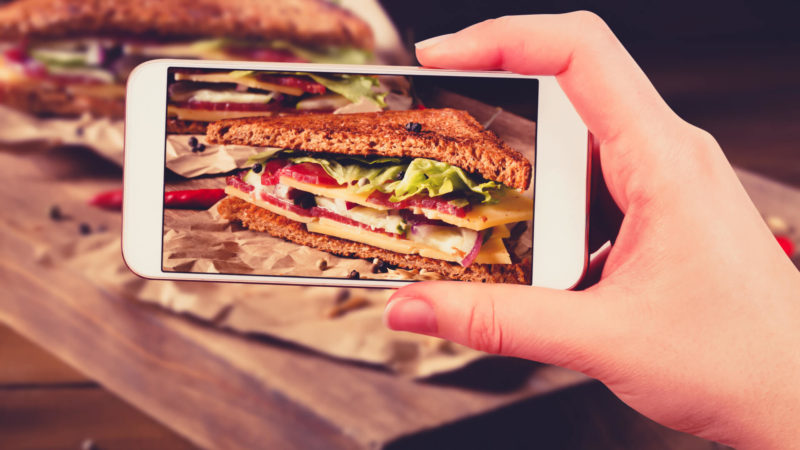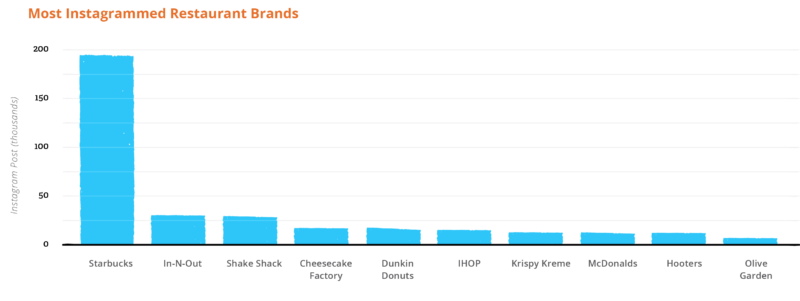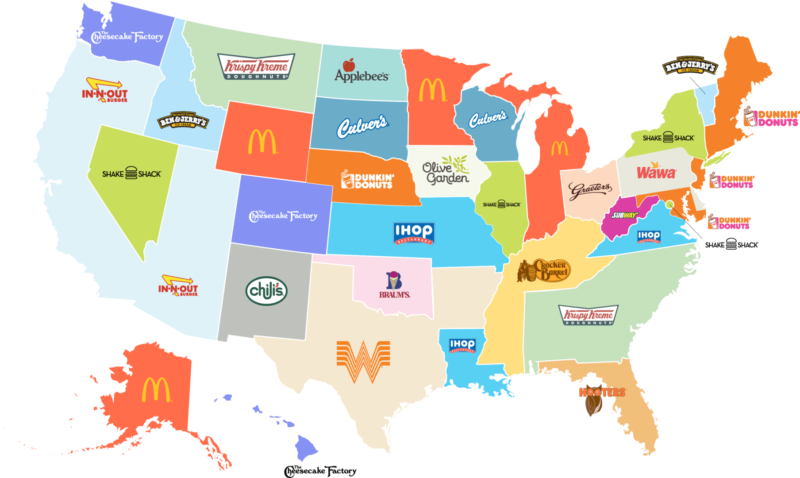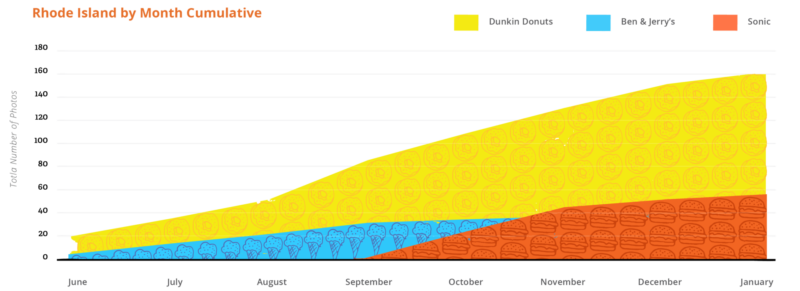Deep-dish digital: The most Instagrammed restaurants in America
Columnist Chris Kerns dives into the data from branded hashtags across the US to bring marketers insight into what social data reveals about brands and consumers.

When setting out to plan social media campaigns for big brands, there is a long list of factors to juggle. Marketers need to manage a budget, find the right mix of organic and paid, put out fires on a weekly basis and handle a huge influx of customer comments. But one of the biggest question marks — and opportunities — for many American brands is how to translate a national campaign to the diverse makeup of the United States.
How can you speak with one voice to such a diverse set of geographies and demographic groups? How can you manage your budget with an understanding of where you’re already overperforming vs. underperforming?
One of the best ways to do this is with market research, and the great news is that there are new — and underused — methods for providing marketers with a real-time look at the market landscape. In the past, market research has only been done with surveys and focus groups, giving you results six months later (if you’re lucky) to give you insights around consumers and their attitudes.
But today we’ll look at social media and how this data source can help provide answers to some questions with a few quick searches.
To demonstrate the power of social data, we looked at branded hashtags across the country to see what we could learn about brands and consumers. We chose restaurants as a good example to highlight regional differences and see what social mentions can tell us — within a few hours of research, not a few months.
The data
Many Instagram posts, like other social content, include geolocation embedded in the data. We took a look at Instagram posts with geolocation turned on that also included a mention of a restaurant from a list of 96 fast food and casual restaurant brands in the United States.
We collected data from June 2015 through mid-January 2016, ending up with around 500,000 posts with a combination of geolocation information and restaurant hashtags.
The findings: Starbucks rules the US
In aggregate, the most Instagrammed brands across the country were:

Starbucks
As most caffeine-addicts could have told you, Starbucks is the 800-pound gorilla of social restaurants. Starbucks hashtags are used over six times more than the next biggest chain, #InnOut, and registered top marks in every state except for Vermont.
Starbucks has a rare combination of physical reach across the US and a brand promise that many Americans look to associate themselves with.
Knowing that Starbucks wins the day, we needed to exclude the outlier to understand patterns in regional differences across the US. Once Starbucks was placed to the side, a different picture of the United States emerged.
The United States goes out to dinner
The first pattern we noticed was that brand popularity doesn’t correlate 1:1 with the number of physical locations, with smaller brands enjoying a good showing in many states. We also see that Dunkin’ Donuts dominates the East Coast; Cracker Barrel dominates in many states in the middle of the country; and In-N-Out has a huge share of voice in many West Coast states.

Shake Shack and In-N-Out
In-N-Out has a long history of word-of-mouth in California since its founding back in the 1940s, but there’s evidence of a potential new favorite brand in the near future. In-N-Out managed to win California, Arizona and Utah, but Shake Shack — the fast-growing NYC burger chain — is catching up quickly, with a big acceleration in social mentions.
Smaller brands
We saw patterns in several states where local brands — like Braum’s in Oklahoma and Graeter’s Ice Cream in Ohio — are the top-used hashtags in the local market. Just like Starbucks, these local brands define users’ personalities. Many people in the area will have decades of associations with the local brands, and visitors love to show off any local flavor they find while traveling.
Rhode Island & Sonic
The small state of Rhode Island showed an interesting pattern for a new entry into the local marketplace. By looking at month-over-month totals for restaurant brands in the state, we can see a new brand appearing in October and enjoying a quick social rise: Sonic.

Sonic began operations in Rhode Island in October of 2015 and was frequently mentioned enough to bump Ben & Jerry’s out of the second-place spot for Instagram mentions by January of 2016. It’s a good reminder that even with decades of history, a social crowd’s attention can quickly shift to new topics and brands.
Take-home learnings for marketers
There’s a full-meal deal going on in social data, and marketers should look to use as much as possible to tell the story for their success. When you combine hashtags or mentions with other dimensions of data — like geolocation — you can find patterns and insights that could otherwise take months of costly market research to uncover.
Here are some points to consider as you’re jumping in to understand your brand’s overall performance in a regional world:
- Make the most of your budget: Social media can help identify local patterns to make sure you have a true understanding of where your brand is taking hold and where you’re slipping. With this knowledge, you’ll be able to plan your strategy with better data and insights, which should make any marketer’s mouth water.
- Know the local language: A data-driven approach can not only help you understand local attitudes, but it also can give your creative team direction on regional keywords, imagery and tone/voice. It’s important to speak with one brand voice and to know the ins and outs of each audience that will hopefully be listening.
- Competitive edge: Data from social media gives your brand an edge — not only understanding who’s talking about you vs. your competition, but getting that information in real time. By leveraging the right data sources, you can ensure that your marketing team is learning about your audience each and every day.
Contributing authors are invited to create content for MarTech and are chosen for their expertise and contribution to the martech community. Our contributors work under the oversight of the editorial staff and contributions are checked for quality and relevance to our readers. MarTech is owned by Semrush. Contributor was not asked to make any direct or indirect mentions of Semrush. The opinions they express are their own.
Related stories
New on MarTech